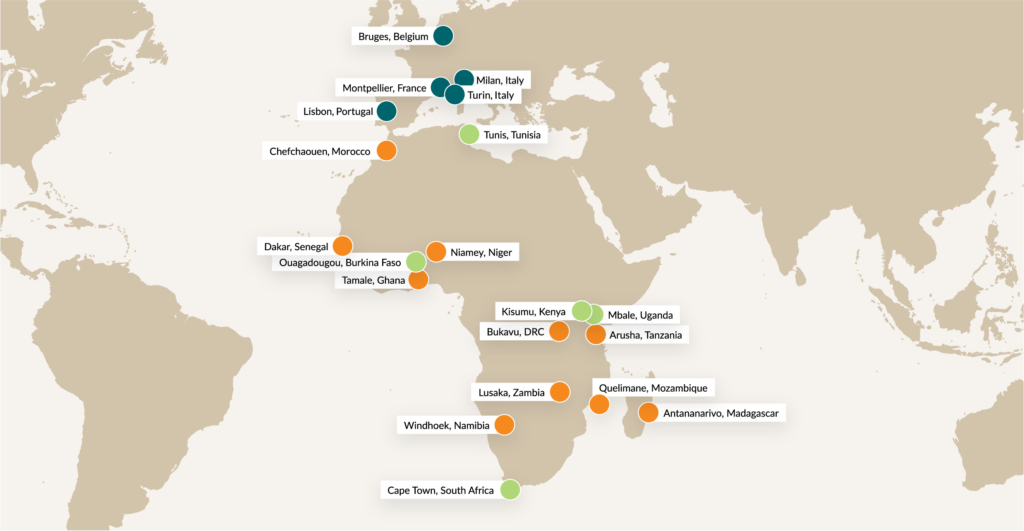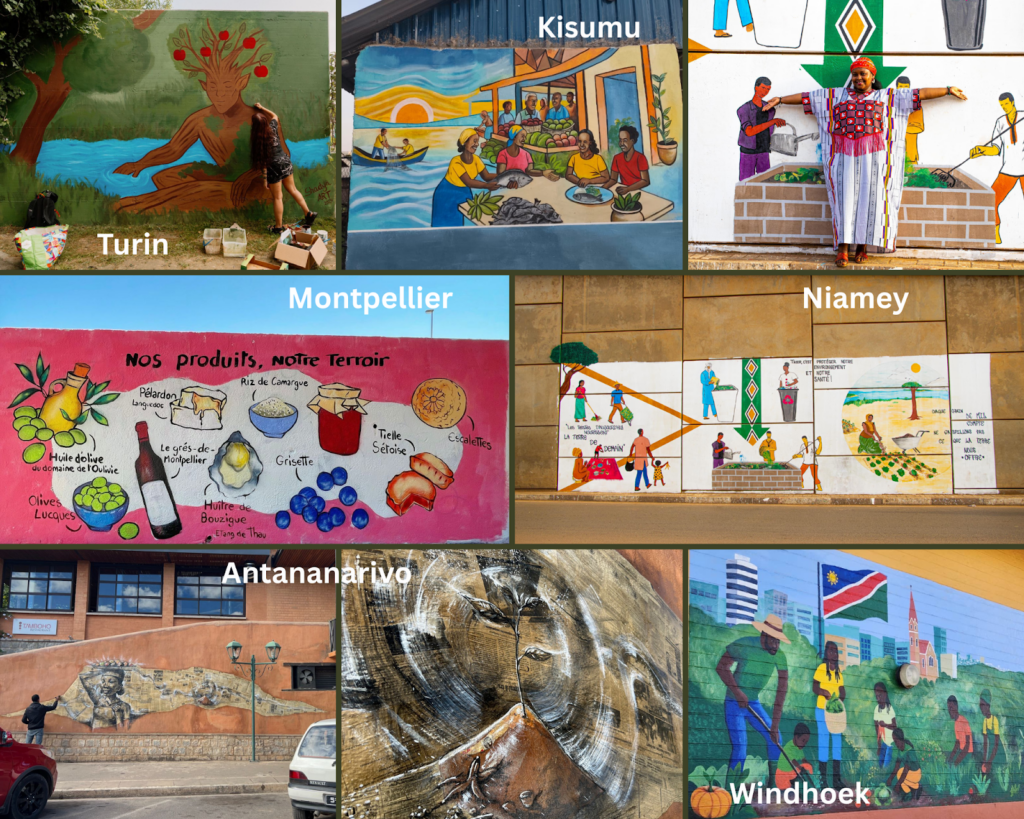Three ways youth are influencing local food systems
This blog was written by Tashi Piprek, AfriFOODlinks Youth Ambassadorship Focal Point (ICLEI Africa), and edited by Matteo Bizzotto, Global Communications Senior Officer (ICLEI World Secretariat).
International Youth Day – on 12 August – is a chance to reflect on how youth are advancing multilateral cooperation through technology and partnerships. In particular, we will look at the example of the AfriFOODlinks Youth Ambassadors.
AfriFOODlinks is a multi-city initiative connecting 20 cities across Africa and Europe to transform urban food systems. Coordinated by ICLEI Africa, the project works to embed food in local governance, improve food access, and strengthen sustainable livelihoods. Within this, the Youth Ambassadorship supports 20 young leaders, one in each city, to document local realities, connect with peers across the network, and pilot creative, city-level actions.
The impact of this structure goes beyond geography: It creates real opportunities for peer learning, experimentation, and shared reflection. Over the past 18 months, youth ambassadors have engaged diverse stakeholders in their cities, developed murals, leveraged technology and pushed for ground up collaboration on issues within their city food systems.

From Cape Town (South Africa) to Kisumu (Kenya), and Tunis (Tunisia) to Milan (Italy), the youth ambassadors have been working at the intersection of food, community, and communications. Their efforts have ranged from hosting city-level events and conducting street interviews, to disseminating advocacy messaging online and even producing murals in their cities. The common thread is a shared commitment to make local food systems more visible, more just, and more rooted in lived experience.
1. Street Art
Food systems are the intricate web of people, places and processes that shape how we produce, share and experience food, often unnoticed in daily life. Through murals, youth ambassadors make these systems visible, sparking conversations and connections in their communities.
“Storytelling gives us the power to challenge stakeholders and policy makers. We can use the art of story telling to reimagine our food,” said youth ambassador Fernando Sozinho (Quelimane, Mozambique).

In order of appearance:
- Turin, Italy – Reimagining our place in the ecosystem – A riverside call for harmony between people, food, water, and nature. By Francesca Allemano and Shadé.
- Kisumu, Kenya – Lake’s Gift: City’s Health – Linking Lake Victoria’s bounty to community health and sustainable diets. By Bonareri Morara and Daniel Malik.
- Montpellier, France – Our products, our region – Showcasing 10 iconic foods tied to Montpellier’s landscapes and traditions. By Doriane Ouedraogo and Lou Bernard.
- Niamey, Niger – Nothing Wasted – Inspiring composting and waste sorting with messages like “Every grain of millet counts.” By Mariama Chitou and Éric Sovuthy Kruoch
- Antananarivo, Madagascar – From waste to wonder – Turning recycled materials into art on pollution, composting, and local food. By Tiakaly, Dina Mitia Rabearivelo and Radisson Tamboho.
- Windhoek, Namibia – From the Ground Up – Celebrating Farm Okukuna and the vision of a greener, youth-led, food-secure city. By Kaylah Cordom and Frans Nambinga.
Through these murals, youth remind us that the most powerful systems change often begins with people imagining and enacting healthier, more just food systems.
2. Technology and partnerships
Digital tools are central to how ambassadors reach audiences and connect ideas. Some use social media to spotlight local food cultures or raise awareness on access and affordability. Others leverage photo and video storytelling, chat groups and virtual events. The silver thread is to use technology as a tool for inclusion.
“We have to be creative to draw interest from young people,” said youth ambassador Tegitu Casiraghi (Milan, Italy).
For example, a youth-led webinar held in July 2025 demonstrated how technology can foster meaningful and inclusive collaboration. AfrifoodLinks youth ambassadors lead the facilitation, tech support, content, and simultaneous French-English interpretation for real-time dialogue.
In Arusha, ambassador Filbert Minja profiled the youth-led platform Sambazah, which connects food vendors with consumers to support local supply chains.
3. Cooperation from the ground up
The AfriFOODlinks Youth Ambassadorship has always been about experimentation, connection, and adapting ideas to context. While ambassadors worked independently in their cities, many found alignment in the questions they were asking. Many shared ideas or built on each other’s work. Some collaborated directly. And for some others, simply seeing what was happening in another part of the continent, or another part of the world, shifted how they thought about their own work.
“Because we are youth ambassadors, we get a seat at the table,” said youth ambassador Kaylah Cordom (Windhoek, Namibia).
In Kisumu, ambassador Bonareri Morara tackled post-harvest fish loss and gender exclusion in the value chain. After learning about solar drying technology through AfriFOODlinks connections and her involvement in the project’s business incubation programme, she introduced it to local women fish vendors. She involved them directly in decision-making, building both ownership and uptake of the new method.
In Mbale, ambassador Sam Wesamoyo partnered with local organisations and academia to lead a city-level food safety event on the topic of food safety at Namakwekwe Market. Combining a clean-up, vendor engagement, and hygiene training, the event tackled long-standing issues like blocked drainage and poor food handling.
What comes next
There is no single model for youth leadership in food systems. Through the youth ambassadorship, AfriFOODlinks has created space for locally relevant, youth-led action – as well as recognising its value as input into policy and driver of change on the ground. These youth ambassadors have tackled issues from food access and waste to street trading and the exclusion of women from economic and political life. But their work is not fixed; it continues to evolve, with murals, city events, and stories. Many are already imagining what youth participation could look like in their cities in the years ahead, beyond AfriFOODlinks.Explore the Youth Ambassador Stories Page to see what’s already been done.
Watch the AfriFOODlinks Youth Ambassadors video to hear directly from the ambassadors.






